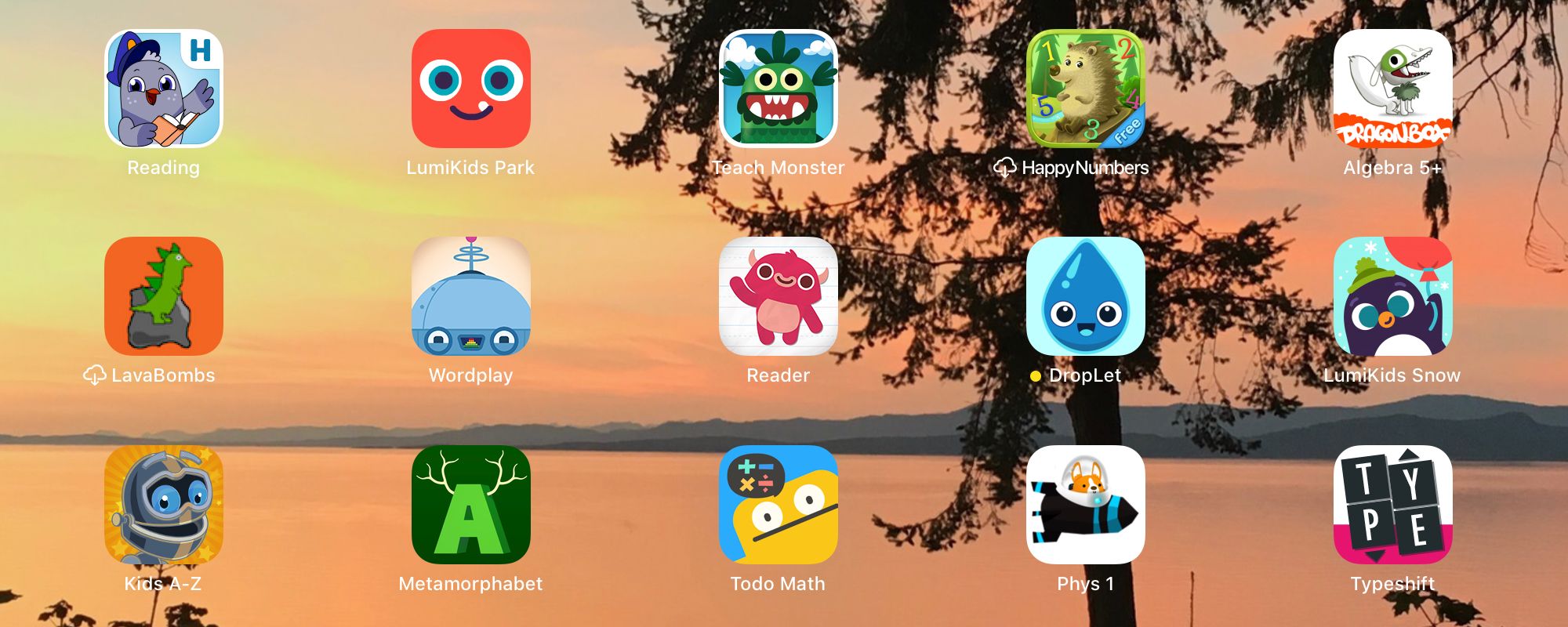Why I ❤️ EdTech

My first memory of using EdTech (although I didn't think of it as that at the time) was using Reader Rabbit back on what must have been an Apple II. I can still recall playing the "train game".
Over the years from elementary to middle to highschool, I was continually exposed to various edtech apps. Often they focused on teaching typing or math (Operation Neptune anyone?), although I do remember one that allowed you to write stories, by using clipart to build a scene and then adding text to the bottom. In highschool, the province I was in introduced a new math curriculum that threw everyone off their game, and when my mom found out that there was a company making a companion app, she phoned them and managed to get an early copy for me to use.
One of my favourites was a math program — Treasure MathStorm! — I remember playing where you climbed this snowy mountain, and if you reached the top, you got a random 'collectable' to store in a cave at the bottom (and then you climbed again). Showing off your room of collectables was considered "cool," which meant that kids were motivated to keep climbing the virtual mountain. And in order to climb you had to answer math problems along the way. I bet we all practiced a lot more math playing that game than whenever our teacher handed us a worksheet, and a lot more willingly too.
The actual educational value of those EdTech apps is debatable. Some were good, some were mostly a time waster. I don't credit my ability to type to any typing program, but to chat rooms and online messaging, where if you couldn't type quickly, you'd fall behind and get cut out of the conversation. The pros and cons of EdTech apps is an area that I'm personally fascinated by. But when I was a kid first trying them out it wasn't something that ever crossed my mind.
The main thing that always pulled me into EdTech was that most programs (the well done ones, anyway) gave you the ability to do one of two things.
- Create Something New. Whether it's writing a story, a program, a game, controlling a robot, or editing a video, many EdTech apps put the ability to do so right in the hands of the students, no intermediary needed.
- Fail Without Failure. Failure is, in my opinion, an under-discussed topic (and one I'll write a post on), but gamified EdTech apps regularly rely on failure to determine if you won or lost. When failure is used in the context of a game it is often received as feedback on how to do better next time, not a reason to stop.
These days, there's a third thing that EdTech apps often do, but it wasn't as common back when I was in middle or high school (wow, this makes me feel old :P). And that's Connecting People. Many of today's apps enable students to connect and work with students and experts from around the world, enabling richer experiences than were ever possible before.
To me, the good I see in EdTech encapsulates all my thoughts and ideas around a better education system. A system that works with each student where they are, not where their class expects them to be. A system that provides multiple pathways to success. A system that encourages students to try again when they fail instead of punishing them. A system that focuses on mastery over time in chairs or one-off "make or break" tests.
I plan to use this blog to explore both areas where I see the above being done well, but also areas where we, as a community, should be focused on improvement. I want to break through some of the "company speak" that often surrounds EdTech products and focus instead on what they actually deliver. Sometimes this might be through a specific product review, but I plan to focus more generically, as the issues I've found, and solutions I love, are rarely limited to just one app.
Last but not least, if you have any ideas or topics you'd be interested in me writing about, feel free to send me an email or reach out on Twitter.

